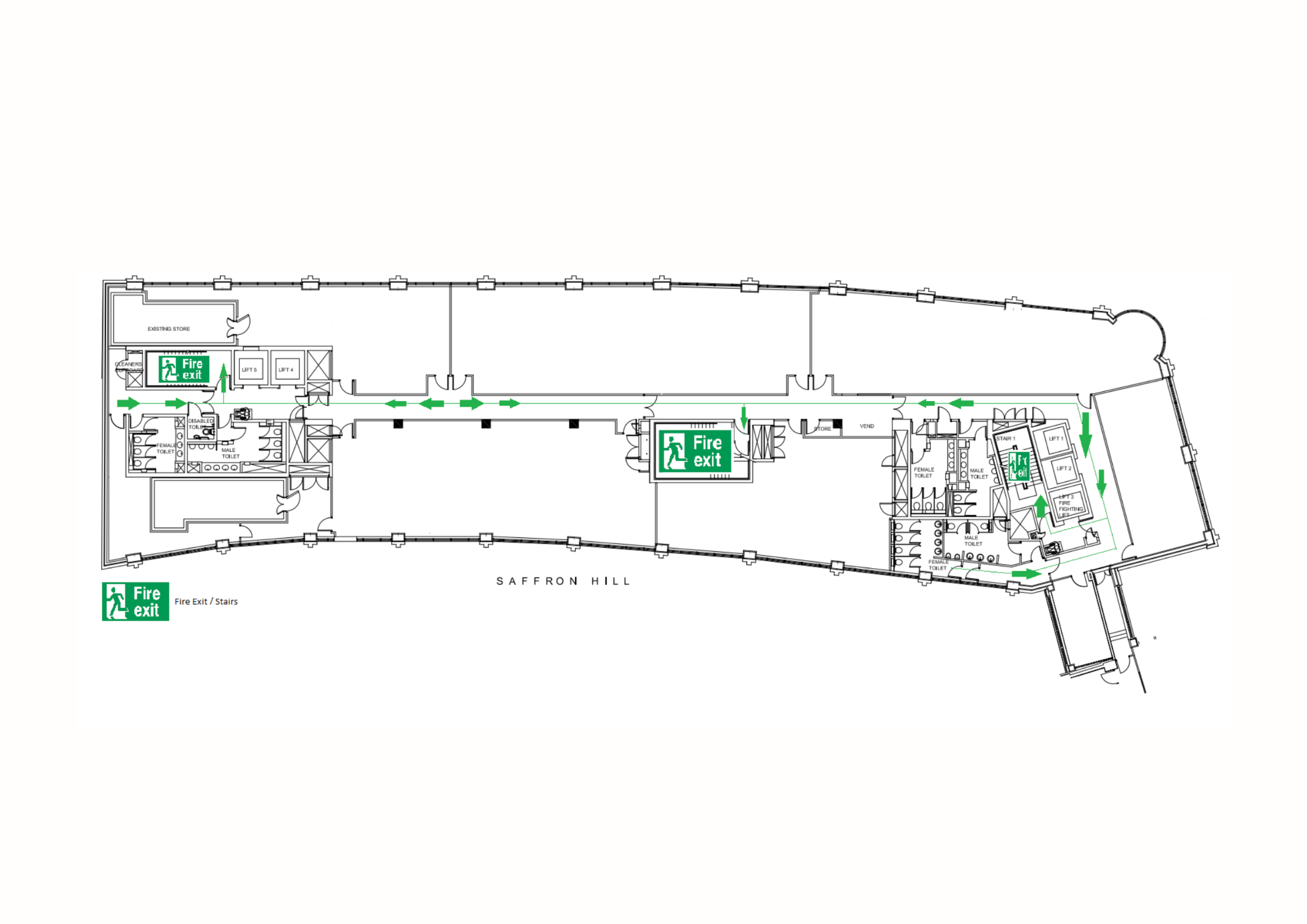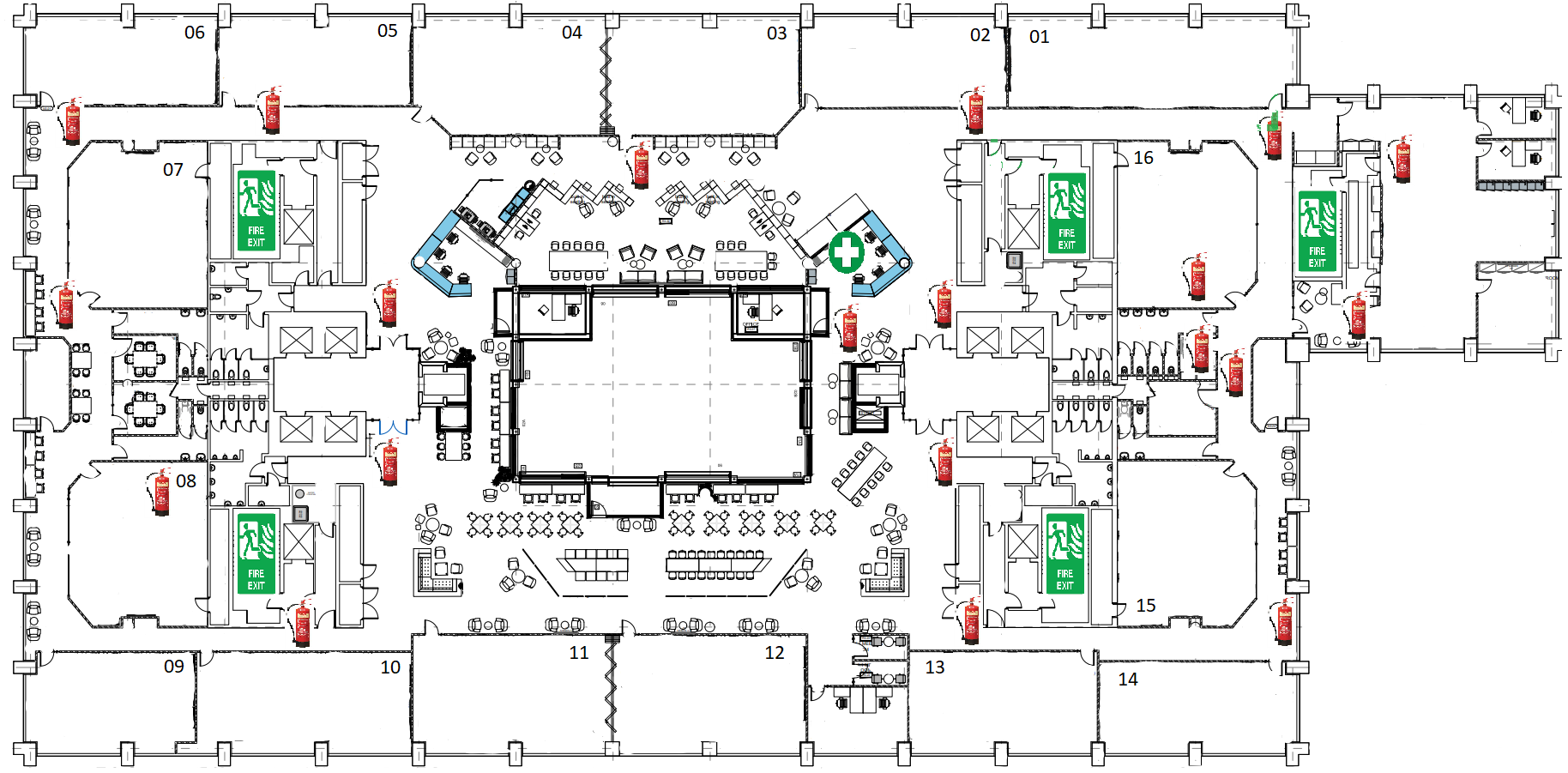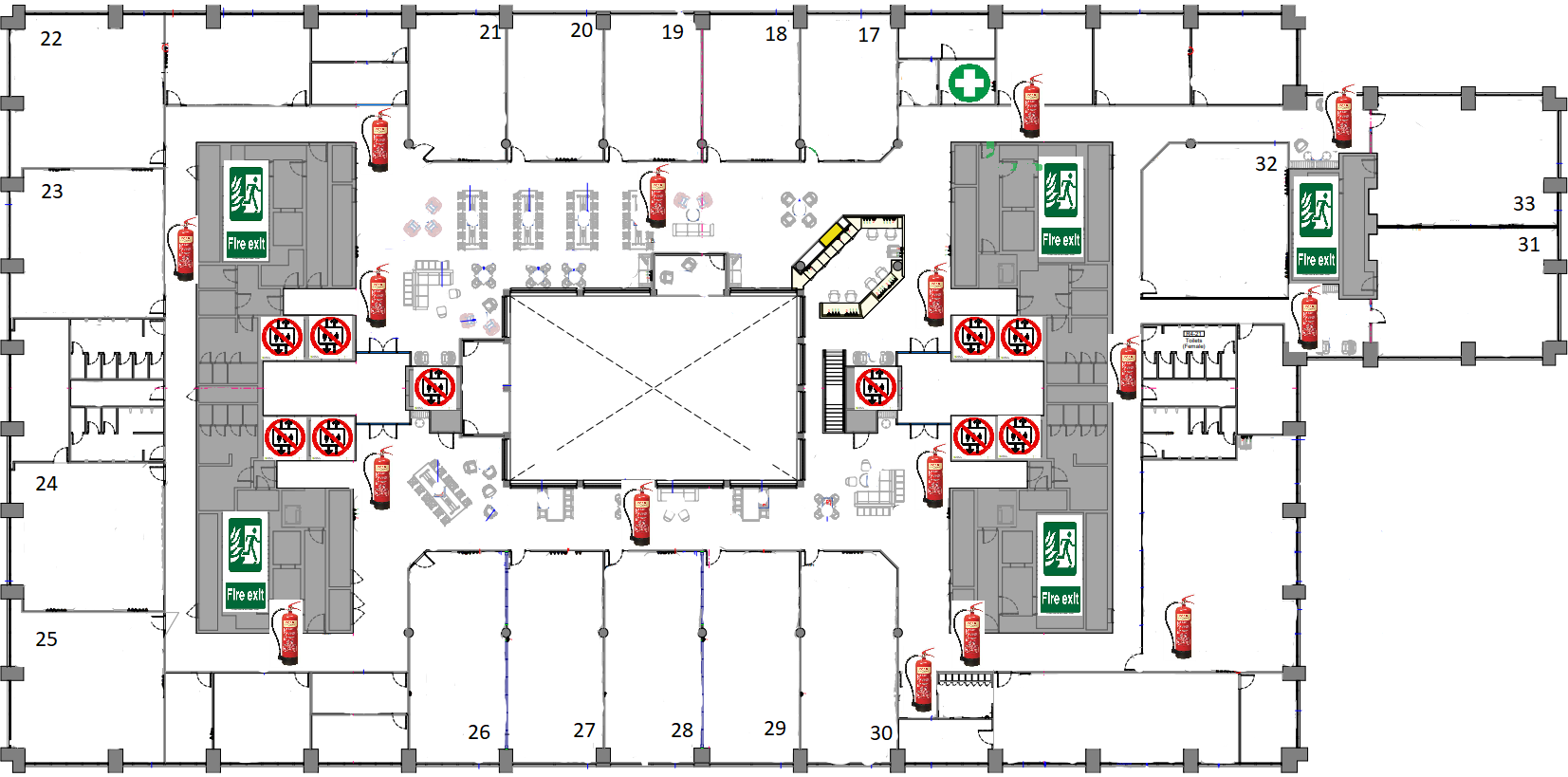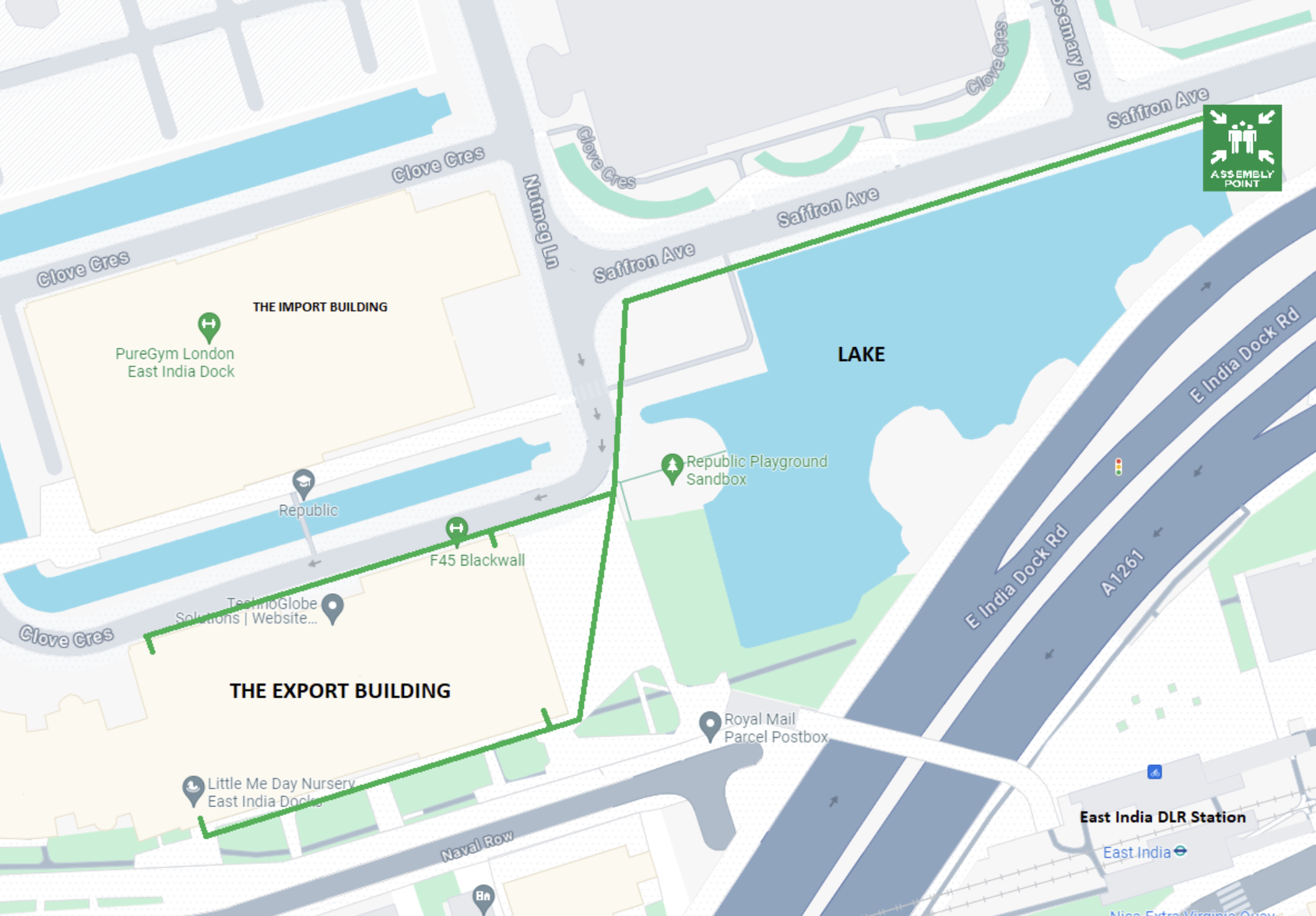Fire Procedures at our Charterhouse and East India sites
Charterhouse Campus
In the discovery of a fire:
- Press the red fire alarm call point until you hear the audible alarm
- Alert the emergency services by dialling 999 and inform them of the fire and location
- Go to the nearest emergency exit via the quickest and safest staircase possible
- Make your way to the building’s refuge point.
Upon hearing the alarm:
- Make your way quickly and safely to the nearest sign-posted fire exit
- You should leave your belongings behind and exit the building swiftly and efficiently
- The escape routes are clearly signposted, which include three staircases to the ground floor
- Follow the fire wardens’ instructions who will be wearing high-visibility vests
- Disabled or injured building occupants without the possibility of self-evacuation will be taken to the refuge point for assistance.

East India Campus (Import and Export Buildings)
Please note a weekly fire system test occurs on Thursdays from 8.15 am to 8.45 am.
Actions on Fire Discovery:
- Activate Fire Alarm: Operate the nearest fire alarm by pressing the red call point's centre until the alarm sounds.
- Call Emergency Services: Dial 999 to report the fire. Provide the building's location and confirm witnessing the fire.
- Fight Fire (if trained): If trained and confident, use provided portable fire extinguishers without risking yourself or others. Always stay between the fire and the nearest escape route.
- Evacuate Safely: Head to the nearest emergency exit via the quickest, safest route. Encourage others to follow, leaving belongings behind. Do not use mobile phones or carry drinks.
- Assembly Point: Proceed to the assembly point. Stay there until further notice.
Actions upon Hearing the Fire Alarm – Floor Users:
- Evacuate Promptly: Upon hearing the fire alarm, swiftly and safely move to the nearest sign-posted fire exit. Leave belongings behind, avoid mobile phone use, and do not carry drinks.
- Know Escape Routes: Be familiar with exit signage from induction training. Be aware that the exit route may differ from everyday entrances/exits.
- Use Primary Escape Routes: The primary means of escape is via the five internal stairways leading to open air on the ground floor.
- Follow Fire Wardens: Identify Fire Wardens by their high-visibility vests. Follow their instructions, including checking toilets and unoccupied areas.
- Confirmation of Evacuation: Fire Wardens will receive SMS requests for confirmation of a clear building. Confirm once your area is fully evacuated.
- Assembly Point: Fire Wardens lead to the assembly point, ensuring everyone follows. Stay there until further notice.
- Returning to the Building: Pass information to the group at the ARUL assembly point when it's safe to return.
General Building Evacuation Procedure:
Visitors/Contractors: Hosts are responsible for visitors/contractors and should inform them of the assembly point in emergencies.
Lecturer Responsibility: Lecturers ensure students evacuate through the nearest exit, especially those with mobility issues. No return until it's safe.
Disabled or Injured Occupants: Evacuate disabled or injured occupants to the Refuge Point and await assistance. Use evacuation chairs if available.
Immediate Evacuation: Leave immediately when the fire alarm sounds (except during the Thursday test) via the nearest fire exit.
Access-Controlled Doors: Ensure ARUL and landlord’s access-controlled doors release upon activation of the fire alarm. Use the green break glass if needed.
Assembly Point Information: Fire Wardens can provide guidance on the assembly point. Prioritise safety and follow these procedures during a fire or fire alarm for a swift and secure evacuation.
Import 3rd and 4th floor:


Export:

Fire Assembly Point:
